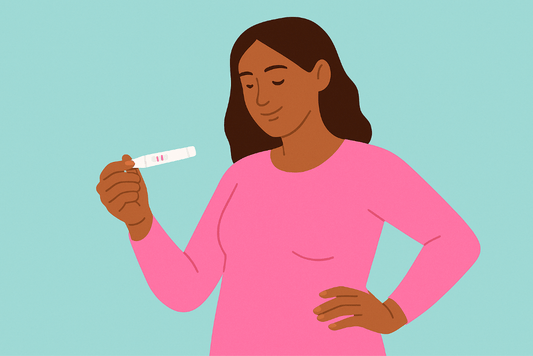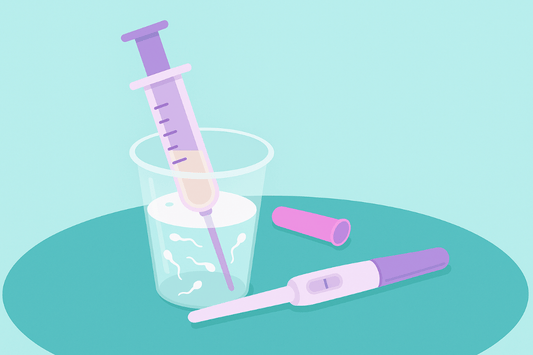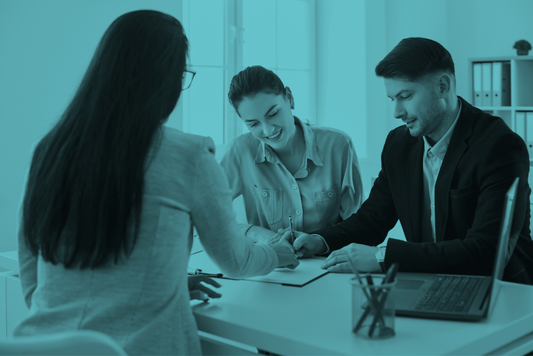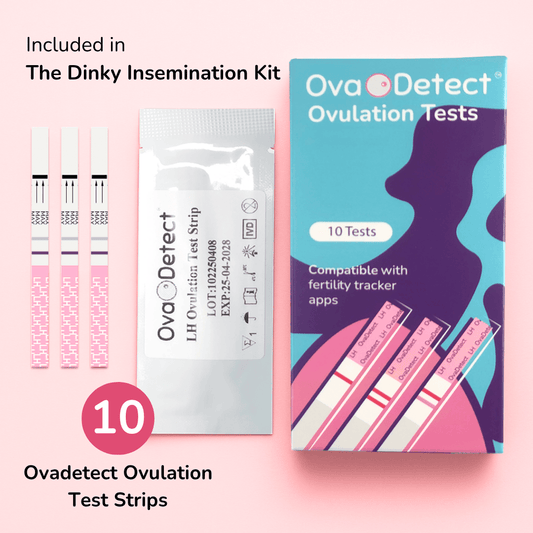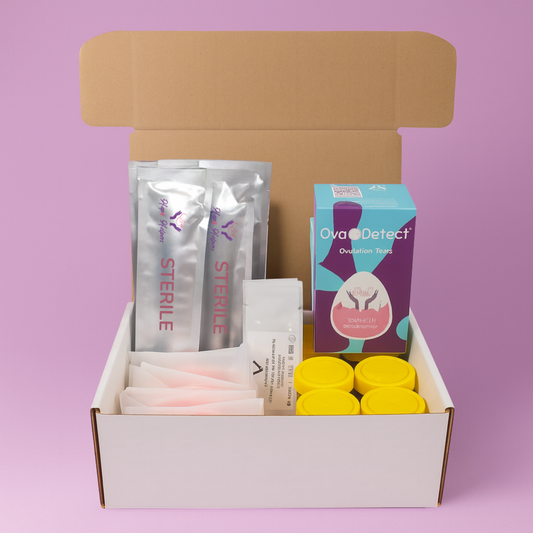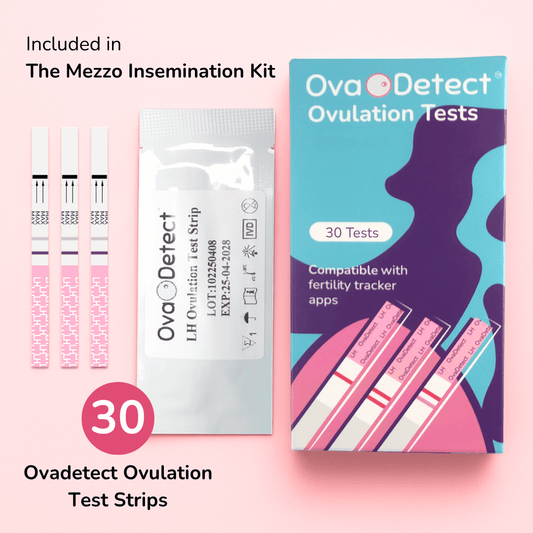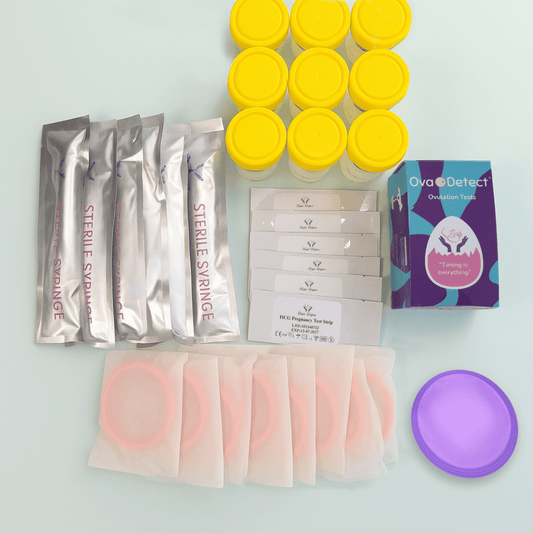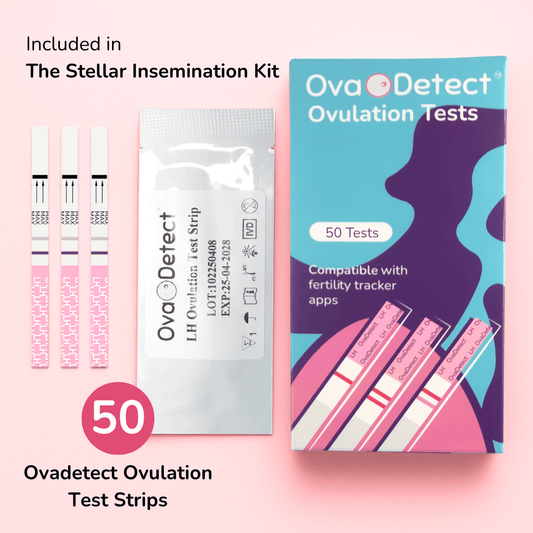Artificial Insemination Processes and Methods
Before we dive in, it's really important you have a good knowledge on Ovulation, so here's a link to an article on our learning center that deeply discusses Ovulation. It also contains information about how to use Ovulation Test Strips effectively.

Artificial insemination is the deliberate introduction of sperm into the cervix or uterine cavity to achieve a pregnancy. Doctors usually perform this procedure and it can be pretty expensive. We at Hapu Helpers assist people in conducting this in the comfort of their homes without a doctor’s involvement.
There are three main types of at-home insemination
All these methods are equally as successful.
Artificial Insemination (AI) – Sperm is inserted into the vagina using a device.
Natural Insemination (NI) – Achieved through sexual intercourse
Partial Insemination (PI) – The male masturbates and, when he is close to ejaculating, inserts his penis into the vagina and ejaculates inside.
Factors and tools
Below, we discuss everything (short videos included) to consider before you inseminate to prepare yourself. At the bottom of this page, you will find a step-by-step video on the insemination process.
Timing
Ovulation is spontaneously triggered about 36-40 hours after blood levels of a hormone called luteinizing hormone (LH) rise. This is known as the LH surge. Once released from the ovary, the egg is picked up and travels down the fallopian tube, where it can meet sperm to fertilize. Timing is everything, as we soon discovered.
On Taryn’s first cycle, we inseminated on the evening of her LH peak and only had one insemination during that cycle. This was our first experience with AI, so it was more of a trial for us as we figured out the process. Unfortunately, this insemination was not successful.
According to the calendar, Kat was due to ovulate on the 5th of March 2020, so we arranged to have one insemination on the 1st and a second on the 5th of March. Kat reached her peak a day earlier, the 4th of March, so we inseminated that night.
Taryn was due to ovulate again on the 19th of March. Based on that, we arranged for our donor to come over on the 17th and again on the 19th. Taryn’s LH peak came on the 18th of March, but our donor couldn’t come over earlier, so we went ahead with the insemination on the 19th.
Syringes
Many people get overwhelmed with the size of syringes, so let’s look into this. The average
ejaculate is between 1.25 to 5ml; remember, the quantity is not significant but rather the quality.
Based on this, it’s easier to use a 10ml syringe for 2 reasons it’s longer and bigger, so it holds more
sperm, allowing it to go closer to the cervix.
Based on personal experience, we found the
regular oral syringes uncomfortable due to the sharper edges. So we have worked with manufacturers and
can supply you with round-tipped syringes for comfort. They are 10ml so that they can cater for any
quantity of sperm. We sell round-tipped syringes in our online store. These syringes are just like the
Mosie baby but without the ridiculous price.
Comparison between a Standard Syringe and a Hapū Helper Syringe
 View Syringe in
store
View Syringe in
storeWatch this video where I discuss Insemination syringes
SoftCups
Softcups/Softdiscs are disc-shaped menstrual cups. However, these menstruation discs have proven beneficial for the insemination process. Inserting the disc keeps the sperm close to the cervix, allowing the sperm cells to pass through it. We used them and were successful with our conceiving. Please ensure you use the discs, not the cups, as the cups are too deep. We supply Softdiscs/Softcups in our online store.
I looked into providing a reusable option. I tried all the ones on the market, yet found the rim either too hard or soft. So I worked with manufacturers and have designed one that is like the disposable ones and is from an FDA-approved facility. We have called it the Hapū Helper, which can also be found on the online store. Please note silicone does not affect the sperm in any way!
See videos below on softdiscs (reusable and disposable) and how to insert and remove them.
There is a method of insemination that only uses a soft cup. This entails getting the sperm into the cup and inserting the cup into the vagina. This method has worked for women, but some find they spill the sperm.
What are softcups/discs and how do they work?
How to insert and remove your softcup/disc
Sperm-friendly lubricant
This sperm-friendly lubricant acts as “cervical mucous (CM)”, which protects and helps travel sperm to your uterus and egg. People who do not feel they produce enough CM can use a lubricant. Some oral tablets can help make more CM, such as Mucinex; however, lubricant is the best option for those who don’t want to take a pill. You must insert the lubricant 15 minutes before insemination as it needs to be body heat temperature. If it is cold, it will kill the sperm. Please offer this to your donor as an option, too; if he uses lotion, other lubricant or saliva, it can kill the sperm. We sell 2 types on our online store.
Sperm Friendly Lubricants
View in storeAn important note on at home IUI/ICI
Some promote others to do an at-home IUI, where a catheter syringe is inserted through the cervix and into the uterus. There can be a small benefit with doing IUI; however, the risks far outweigh the benefits. Some risks include a higher risk of infection, bleeding, damage to the cervix, too much cervical stimulation causing an increase in blood pressure and perforation of the womb. We don’t recommend doing this option unless done by a trained professional. It is extremely dangerous and can cause infection or womb perforation. There is an Australian site that promotes at-home IUI in which 2 members have come forward to us claiming that this process has caused permanent damage to them. If you still wish to proceed with this, do thorough research and use sterilised equipment. Some people have asked their midwives and doctors to do it, although we are not sure how accurate this may be for New Zealand.
Watch ths video on how to do artificial insemination at-home
Some FAQs on at-home artificial insemination
Do you need to orgasm after insemination?
Peeps, let’s be honest here for a second. If orgasms were essential in insemination, then we probably would not have much of a population now, would we :). The belief is that after you have inseminated if you orgasm, the contractions that come with the orgasm will push the sperm along. We had orgasms after our insemination.
There is no harm in having an orgasm, only a benefit regardless of how you see it. It can help you relax and release those endorphins. If you do orgasm after insemination, ovoid oral and intercourse as it will affect the sperm.
Will air bubbles in the syringe harm the sperm?
No, air bubbles will not harm or kill the sperm in any way. You don’t want LARGE air bubbles because you don’t exactly want to be putting air into your vagina. If you have large air bubbles, gently work them out by turning the syringe tip side up and softly tapping the syringe to get the bubble to the top. Small air bubbles are fine, ladies; it’s next to impossible not to have any air bubbles.
Do I need to take supplements?
Three months before trying to conceive, supplements are recommended. The most important supplement you need is Iodine and Folic acid. It is important to take Folic acid until the end of the first trimester and iodine is continued until you have finished breastfeeding.
See why the Complete Prenatal Supplement might be the best for you
Complete prenatal Supplement
If you need help going through any block, talking with a TTC consultant can help! Book a FREE 15-minute virtual consult today!
Book a TTC consultation
 on our CHOOICE website
on our CHOOICE website 

